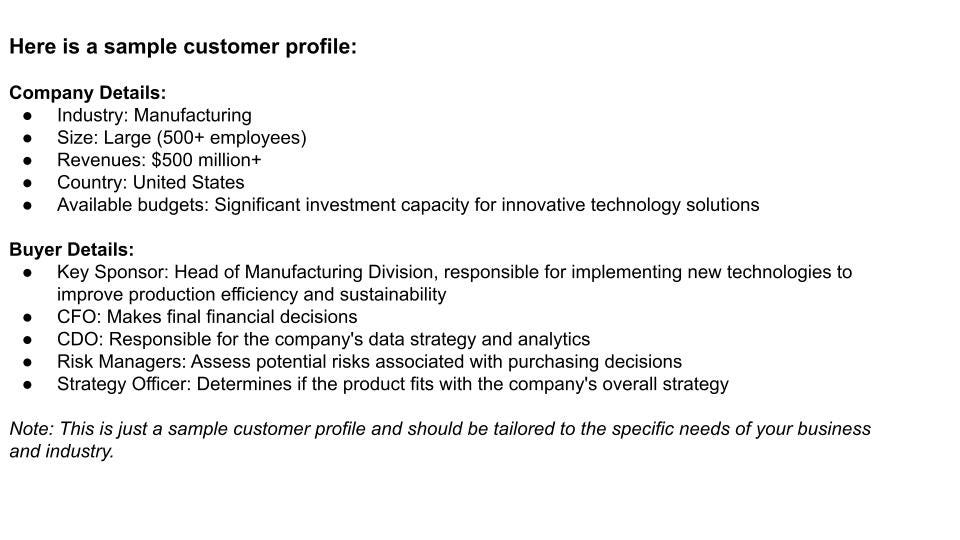Demystify Your Sales Motion
Three components - Customer Profile, Opportunity Map, & Sales Funnel
Understanding the sales motion and process, from marketing to prospecting to pitching, to winning or losing customers, is crucial for everyone in the company, be it the Product, Engineering, Operations, or Data Science teams. Start by talking to your Sales teams and shadowing sales calls with different salespeople across different levels, from head of sales to account executives, across new and existing customers, and for accounts of all sizes. There is no such thing as too many sales calls when it comes to understanding the sales process.
Map your insights to the following three components, which are all living and ever-evolving, yet essential for you to understand:
Customer Profile
Opportunity Map
Sales Funnel
#1: Customer Profile
A customer profile is a vital and most enigmatic aspect of any business. It's where you'll find CEOs, Heads of Sales, and Sales Associates - all with different views. CEOs are the visionaries who sell the future, knowing they have the power to shape the product roadmap. Heads of Sales focus on selling the long term relationship, confident that (mostly !) everything on the roadmap will come to fruition as planned. Sales Associates, on the other hand, are responsible for selling today, and what's available now.
Tip: But don't be fooled - a customer profile isn't just a company profile. It's ALSO the profile of the people who will make or influence the buying decision, and that includes multiple players.
It's essential to consider two critical attributes when developing your customer profile: Company Details and Buyer Details.
Company Details include characteristics such as industry, size, scale, revenues, country, focus areas, and more. It also includes information like customer timelines, and available budgets.
Buyer Details focus on the individuals within the company who will make the purchasing decision. But don't stop there - it's crucial to go beyond the buyer and consider everyone involved in the decision-making process. This includes the money (CFO) buyer, the influencers (CDO, Risk Managers, Procurement, Product leads) whose opinions carry weight, and your key sponsor who stand to benefit from your product.
#2: Opportunity Map
It's crucial to know your opportunity space. However, avoid defining it yourself. Allow your customers to identify the opportunity map for you. Invest time in sales calls and understand their challenges, motivations, and the importance of their issues. e.g. detailed challenges in meeting sustainability goals while also maintaining high production efficiency
Tip: Pressure test these challenges and opportunities with each member of the customer profile you defined in #1 above.
Check if the CFO agrees with the problem statement from your sponsor or how other key internal influencers perceive the problem. You may realize that your sponsor's problem statement is a "nice-to-have" for the CFO or an in-house project funded by another team. Hence, tease out such details early on to craft the right pitch and proposal for increased chances of success.
Remember, in initial calls, focus on understanding customer challenges and problems. Discourage customers (or your sales teams) from jumping right into solutions or product offerings at this stage. By doing so, you can gain a deeper understanding of their needs, motivations, and requirements to develop effective pitches and solutions.
#3: Sales Funnel
The customer sales funnel is the journey a potential customer takes from discovering a product or service to becoming a paying happy customer. It's essential to ensure that the customer sales funnel is operating efficiently and effectively, as any issues or bottlenecks can negatively impact customer acquisition and revenue growth.
Tip: Define and Draw the Sales Funnel for your organization. Then, measure each stage drop-off, efficiency metrics, and diagnose. Have single point owners for each stage analysis.
Remember, there is no one-size-fits-all sales funnel, and every organization is unique. It's important to find what works best for your specific organization, while keeping a close eye on drop-off rates and efficiency metrics.



